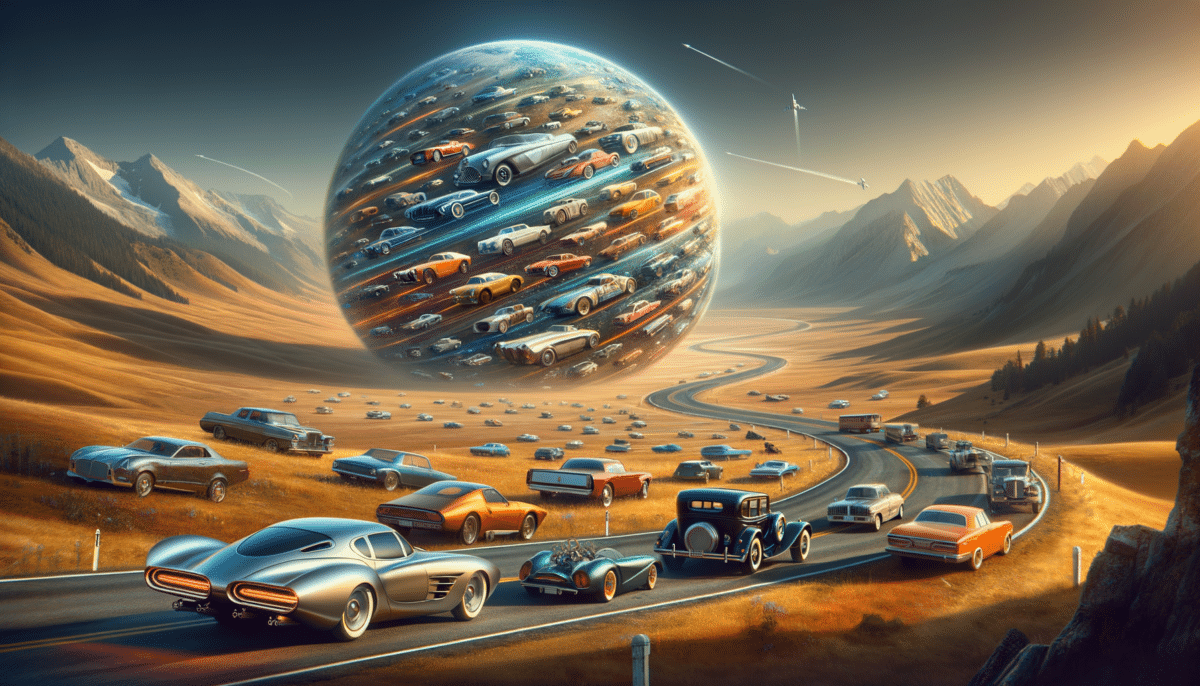The Evolution of Cars: From Horse Carriages to Modern Marvels
The journey of cars from the humble horse-drawn carriages to the sophisticated machines we see today is nothing short of remarkable. The inception of the automobile can be traced back to the late 19th century, with the creation of the first gasoline-powered vehicle. This innovation sparked a revolution that would redefine transportation forever.
Early automobiles were a luxury, accessible only to the affluent. However, the introduction of the assembly line by a renowned industrialist made cars more affordable, leading to widespread ownership. This shift not only transformed personal mobility but also had profound effects on urban planning and the economy.
As technology advanced, so did the features of cars. From the introduction of automatic transmissions to the implementation of advanced safety features like airbags and anti-lock brakes, the evolution of cars has been driven by the need for comfort, safety, and efficiency. Today, cars are equipped with cutting-edge technology, including GPS navigation, voice control, and hybrid engines, reflecting the ongoing quest for innovation.
Understanding Car Types: A Guide to Different Models
Cars come in a variety of shapes and sizes, each designed to meet specific needs and preferences. Understanding the different types of cars can help consumers make informed decisions when purchasing a vehicle.
Sedans are among the most popular types of cars, known for their comfortable interiors and fuel efficiency. They are ideal for families and daily commuting. On the other hand, SUVs offer more space and versatility, making them a favorite for those who enjoy outdoor adventures or need extra cargo room.
For those who prioritize performance, sports cars provide an exhilarating driving experience with their powerful engines and sleek designs. Meanwhile, electric and hybrid cars are gaining traction as environmentally friendly alternatives, offering reduced emissions and improved fuel economy.
Each car type has its unique advantages, and the choice ultimately depends on the driver’s lifestyle and requirements. Whether it’s the practicality of a hatchback or the luxury of a convertible, the diverse range of cars ensures there is something for everyone.
Technological Innovations in the Automotive Industry
The automotive industry is at the forefront of technological innovation, constantly pushing the boundaries to enhance the driving experience. One of the most significant developments in recent years is the rise of electric vehicles (EVs). With advancements in battery technology, EVs are becoming more accessible and practical, offering a cleaner alternative to traditional gasoline-powered cars.
Another notable innovation is the integration of autonomous driving features. While fully self-driving cars are still in development, many vehicles now come equipped with advanced driver-assistance systems (ADAS) that include adaptive cruise control, lane-keeping assist, and automated parking.
Connectivity is also a major focus, with modern cars featuring infotainment systems that allow drivers to stay connected on the go. These systems often include smartphone integration, voice-activated controls, and real-time traffic updates, making driving more convenient and enjoyable.
The future of automotive technology looks promising, with ongoing research into hydrogen fuel cells, vehicle-to-everything (V2X) communication, and even flying cars. As these technologies mature, they promise to revolutionize how we perceive and utilize transportation.
Environmental Impact and the Shift Towards Sustainability
The environmental impact of cars has been a growing concern, leading to a shift towards more sustainable practices within the automotive industry. Traditional internal combustion engines are significant contributors to air pollution and greenhouse gas emissions, prompting the need for cleaner alternatives.
Electric and hybrid vehicles are at the forefront of this shift, offering reduced emissions and improved energy efficiency. Governments worldwide are supporting this transition by providing incentives for EV purchases and investing in charging infrastructure.
In addition to vehicle emissions, the industry is also focusing on sustainable manufacturing processes. This includes using recycled materials, reducing waste, and improving energy efficiency in production facilities. Some manufacturers are even exploring the use of biodegradable materials for car components, further minimizing the environmental footprint.
As consumers become more environmentally conscious, the demand for sustainable vehicles is expected to grow, driving further innovation and development in this area.
The Future of Cars: Trends and Predictions
The future of cars is an exciting prospect, with several trends and predictions shaping the industry. One of the most anticipated developments is the widespread adoption of autonomous vehicles. While there are still challenges to overcome, such as regulatory hurdles and safety concerns, self-driving cars have the potential to transform transportation by reducing accidents and improving traffic flow.
Another trend is the increasing connectivity of vehicles, often referred to as the Internet of Things (IoT) in automotive. This connectivity allows for real-time data exchange between vehicles and infrastructure, enhancing safety and efficiency.
Shared mobility is also gaining traction, with ride-sharing and car-sharing services becoming more popular. This trend reflects a shift in consumer preferences towards access rather than ownership, which could lead to a reduction in the number of vehicles on the road.
Finally, the ongoing development of alternative fuels, such as hydrogen and biofuels, offers promising solutions for reducing the environmental impact of transportation. As these technologies advance, they are likely to play a crucial role in the future of the automotive industry.
